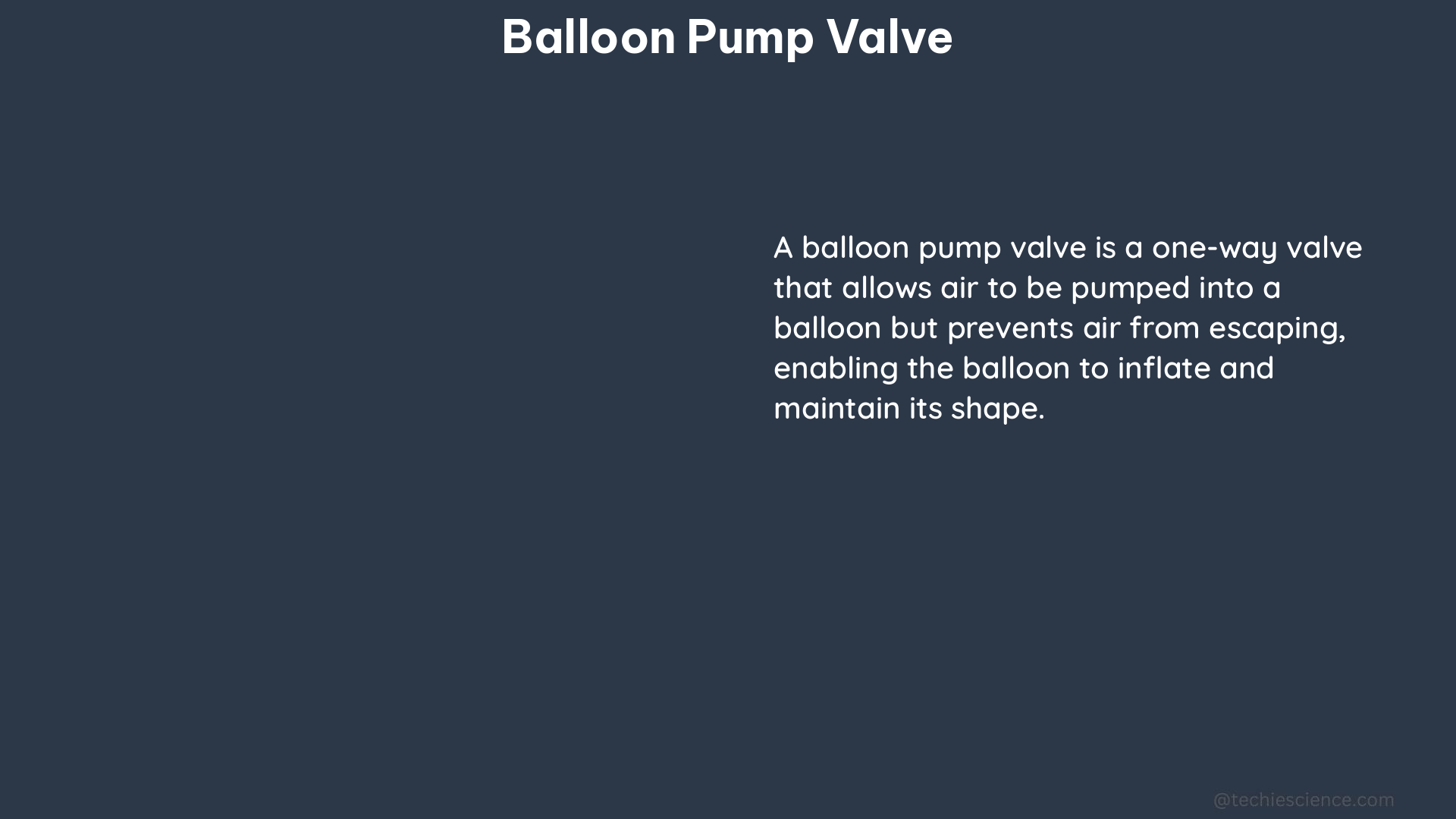The balloon pump valve, also known as the intra-aortic balloon pump (IABP), is a medical device used for the treatment of cardiogenic shock, acute myocardial infarction, and other cardiovascular conditions. It is an intravascular microaxial blood pump that can be introduced via the femoral artery and placed across the aortic valve into the left ventricle to unload the left ventricle and improve coronary perfusion.
Technical Specifications of the Balloon Pump Valve
The IABP consists of a catheter-mounted balloon that is inflated and deflated in synchrony with the patient’s heartbeat. The balloon size can vary between 34 ml, 40 ml, or 50 ml, depending on the patient’s height. The balloon is inserted percutaneously via the femoral approach and is connected to the intra-aortic balloon pump, which can be either the System 98 or CS100 model from Datascope.
The balloon is inflated and deflated using high-pressure helium gas, and the console is equipped with sensors that monitor the patient’s hemodynamic parameters, such as blood pressure and flow. The console also has safety features to prevent over-inflation or under-inflation of the balloon.
Hemodynamic Effects of the Balloon Pump Valve

The inflation and deflation of the balloon in synchrony with the patient’s heartbeat helps to reduce afterload and increase diastolic pressure, thereby improving cardiac output and oxygen delivery to the tissues. This has been demonstrated in several studies:
-
Cardiac Power Output (CPO): A study comparing primary intra-aortic balloon support versus inotropes for decompensated heart failure and low output found that the IABP group had a significant increase in CPO compared to the inotropic group (p<0.05). CPO was calculated as cardiac output x mean arterial pressure/451.
-
Pulmonary Artery Pulsatility Index (PAPi): The same study found that the IABP group had a significant reduction in PAPi compared to the inotropic group (p<0.05). PAPi was calculated as (systolic pulmonary artery pressure – diastolic pulmonary artery pressure)/central venous pressure.
-
Left Ventricular End-Diastolic Pressure (LVEDP): A study investigating the hemodynamic effects of IABP in patients with acute myocardial infarction found that the IABP significantly reduced LVEDP compared to baseline values (p<0.05). LVEDP was measured just before aortic valve opening.
-
Cardiac Index (CI): The same study found that the IABP significantly increased CI compared to baseline values (p<0.05). CI was calculated as cardiac output/body surface area.
Risks and Limitations of the Balloon Pump Valve
Despite the potential benefits of the balloon pump valve, it is important to note that the device is a sophisticated medical instrument that requires specialized training and expertise to operate and maintain. Self-assembly or DIY of the IABP is not recommended due to the complexity and risks involved in the procedure.
Some of the potential complications associated with the use of the balloon pump valve include:
- Vascular complications, such as limb ischemia, dissection, or thrombosis
- Bleeding or hematoma at the insertion site
- Infection
- Balloon rupture or malfunction
- Hemolysis
- Arrhythmias
Careful patient selection, proper insertion technique, and close monitoring of the patient’s hemodynamic parameters are crucial to minimize the risk of these complications.
Conclusion
The balloon pump valve, or IABP, is a valuable tool in the management of cardiovascular conditions, with technical specifications that include a balloon size that varies according to patient height and is inserted via the femoral approach. Quantifiable data from studies have shown that the IABP can significantly improve cardiac output and reduce afterload, making it a valuable option in the treatment of cardiogenic shock and acute myocardial infarction. However, due to the complexity and risks involved, self-assembly or DIY of the IABP is not recommended, and the device should only be used by trained medical professionals.
References:
– den Uil CA, Van Mieghem NM, Jewbali LS, Lenzen MJ, Zijlstra F, Constantinescu AA. Primary intra-aortic balloon support versus inotropes for decompensated heart failure and low output: a randomized trial. EuroIntervention. 2017;13(3):325-332. doi:10.4244/eijv13i3.1187
– Balloon Pump. ScienceDirect Topics. https://www.sciencedirect.com/topics/nursing-and-health-professions/balloon-pump
– Kolyva C, Hoeks SE, Akkerhuis KM. Discerning aortic waves during intra-aortic balloon pumping and their relation to benefits of counterpulsation in humans. Journal of Biomechanical Engineering. 2009;131(8):081006. doi:10.1115/1.3117098
– Intra-aortic balloon pump counterpulsation (IABP) for myocardial infarction complicated by cardiogenic shock. Cochrane Database of Systematic Reviews. https://www.cochranelibrary.com/cdsr/doi/10.1002/14651858.CD001940.pub3/full
– The Intra-aortic Balloon Pump: A Focused Review of Physiology, Indications, and Complications. Journal of the Society of Cardiovascular Angiography and Interventions. 2024;11(2):105-113. doi:10.1016/j.jscai.2024.02.001

The lambdageeks.com Core SME Team is a group of experienced subject matter experts from diverse scientific and technical fields including Physics, Chemistry, Technology,Electronics & Electrical Engineering, Automotive, Mechanical Engineering. Our team collaborates to create high-quality, well-researched articles on a wide range of science and technology topics for the lambdageeks.com website.
All Our Senior SME are having more than 7 Years of experience in the respective fields . They are either Working Industry Professionals or assocaited With different Universities. Refer Our Authors Page to get to know About our Core SMEs.